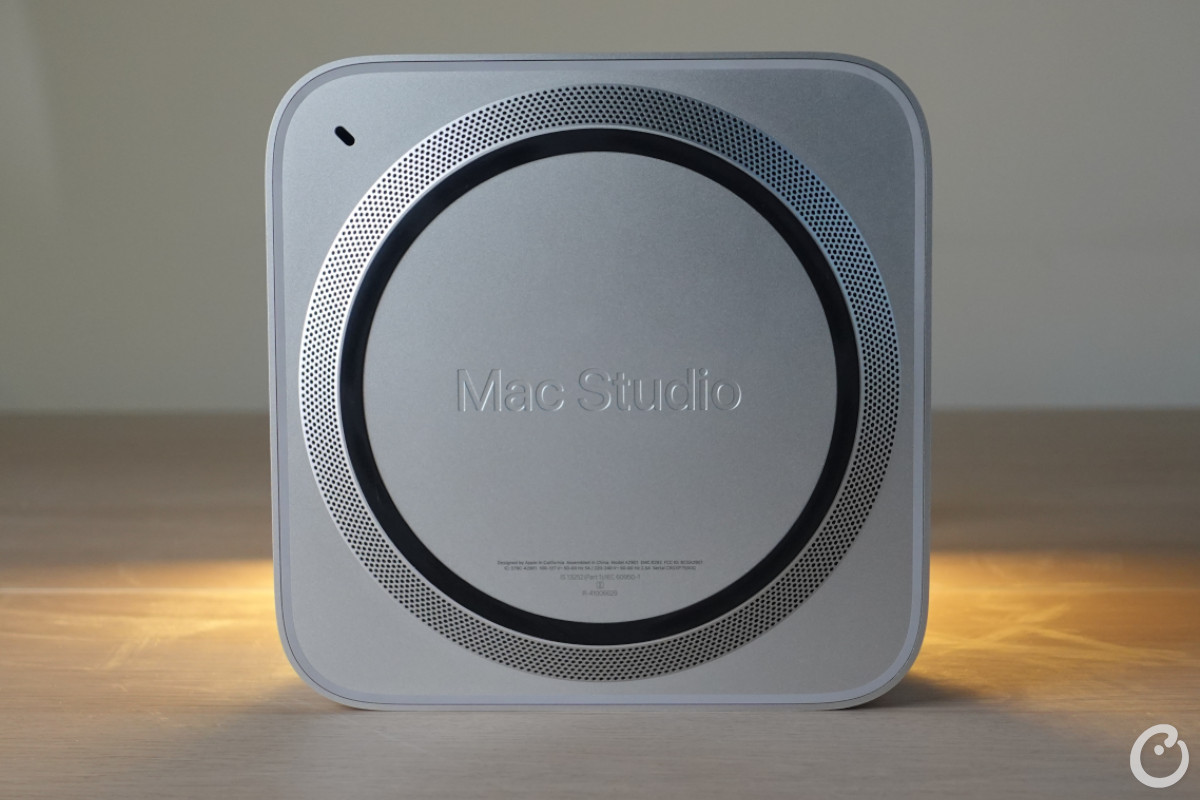- The refreshed Apple Mac Studio was launched during WWDC 2023.
- It is powered by the M2 Max SoC or M2 Ultra SoC and comes with up to 192GB of unified memory and 8TB of SSD.
- The Mac Studio has a price tag starting at $1,999.
Apple announced the new Mac Studio earlier this month at the WWDC 2023. Although it looks the same as last year’s Mac Studio, the internals have seen an upgrade. With prices starting at $1,999, the new Mac Studio is powered by either the M2 Max SoC or M2 Ultra SoC, while the memory and storage can be configured depending on the user’s needs.
We have acquired the M2 Max variant at the Counterpoint studio and have customized the machine with 64GB of unified storage and 1TB SSD, which cost around $2,599.
WATCH: Apple Mac Studio: Unboxing and First Impressions
Here are our initial impressions:
Solid build, compact and neat design
Unlike Windows-powered desktop computers, the Mac Mini and Mac Studio line have a very impressive compact design. Although it weighs between 2.7kg and 3.6kg, depending on the configuration, it takes up little space, reduces clutter and looks neat. The Mac Studio is a square-shaped aluminum box with rounded corners, a flat top with the Apple logo, and flat edges.

The bottom half is tapered and has grille holes for the exhaust fan. The back houses all the major connectivity ports and a grille for ventilation. Talking about buttons and ports, you get two USB-C (Thunderbolt 4) ports in the front along with one SDXC card slot.

At the back, there are four Thunderbolt 4 ports, two USB-A ports, a 10Gb ethernet port, one HDMI port, a 3.5mm headphone jack, and a power button. The main power port is in the center. Overall, we love the neat and clean design.
One notable aspect is the use of sustainable materials for packaging. The packaging box is made from recycled cardboard and there is no plastic used.
ALSO READ: Vision Pro, iOS 17, New Macs: Here’s Everything Announced at Apple WWDC 2023
Mac Studio specifications and configurations
The Mac Studio is available with either M2 Max or M2 Ultra SoC options. The base model with M2 Max SoC comes with a 12-core CPU, 30-core GPU, and a 16-core neural engine for $1,999. For an additional $200, users can opt for a 38-core GPU.
Made on TSMC’s 5nm process node, the M2 Max has 67 billion transistors, and its AI performance can reach 15.8 TOPS (trillion operations per second). The chipset supports up to 10 streams of 8K ProRes video playback and support for up to five displays. It also brings upgrades to the wireless connections in the form of Wi-Fi 6E and Bluetooth 5.3, making it future-proof for the next few years (although Wi-Fi 7 will become widely available from early 2024 after the standard is finalized).

For a more powerful machine, users can get one with the M2 Ultra SoC featuring a 24-core CPU, 60-core GPU, and 32-core neural engine starting at $3,999. For an additional $1,000, users can get a 76-core GPU.
With the base model of M2 Max SoC, you get 512GB of SSD and 32GB of unified memory, but configurations allow up to 96GB of unified memory and 8TB SSD. This maxed-out version will cost $5,399. Similarly, the M2 Ultra Mac Studio base model comes with 64GB unified memory and 1TB SSD, which can be reconfigured to get up to a massive 192GB of unified memory and 8TB of SSD. The maxed-out version costs $7,799.

ALSO READ: MacBook Pro 16 with M1 Pro SoC First Impressions: A Promising Upgrade for Content Creators
Initial impressions
It has only been a day since we got our hands on the Apple Mac Studio and we are still setting up the apps we require, like Adobe Premier Pro and After Effects, along with the required resources. Currently, we are using the M1 Pro-powered MacBook Pro 14 and MacBook Pro 16 as our video editing devices at the Counterpoint studio. We often run out of memory when rendering videos with a big timeline that includes audio, video, and some effects. That is a key reason why dedicated workstations are a must-have. With our new Mac Studio, featuring 64GB of unified storage, we expect the video editing process to be much smoother.
That said, we will be putting our M2 Max-powered Mac Studio through the paces for editing different forms of content and assessing the gaming performance. We will be putting it under stress tests too. More about the performance will be presented in our upcoming review, so stay tuned!

